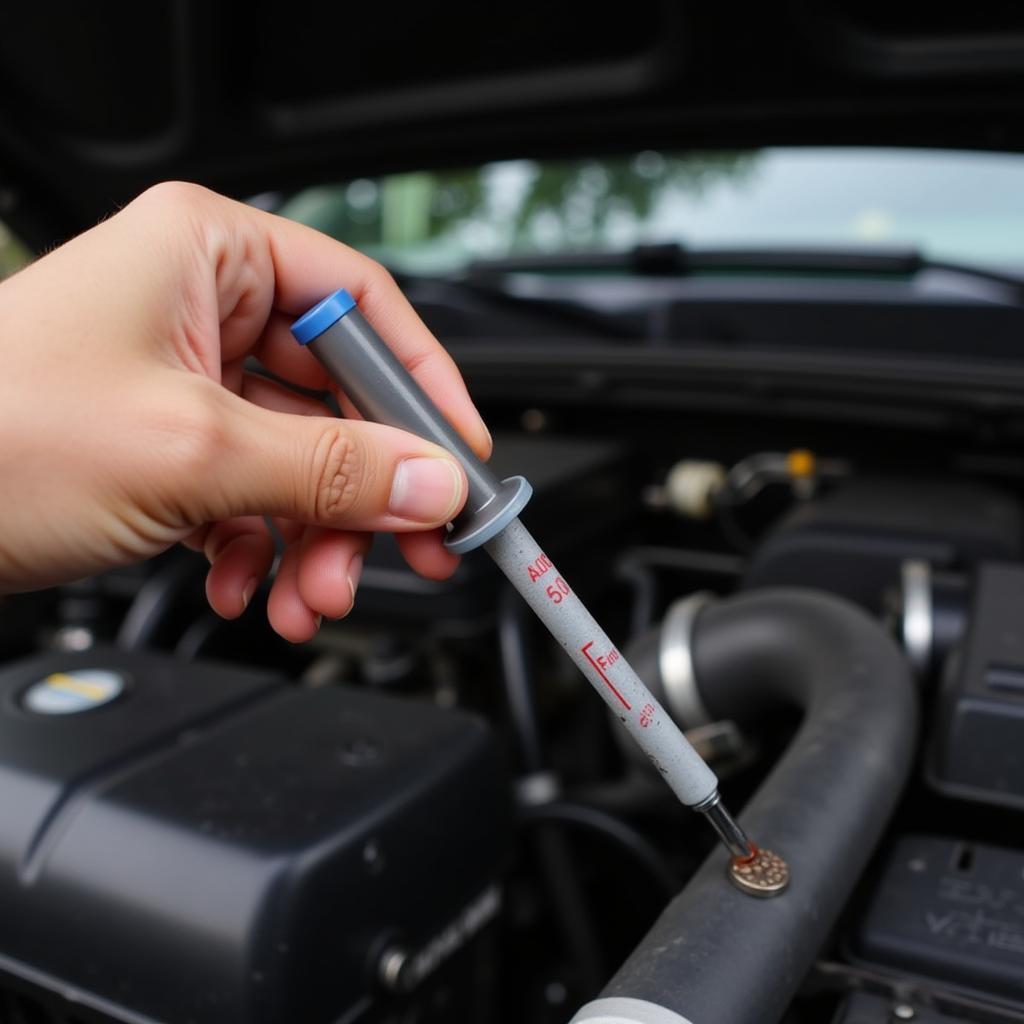Car Brake Booster Problems can manifest in various ways, from a stiff brake pedal to a hissing sound under the hood. Understanding these problems is crucial for maintaining safe and reliable braking performance. This guide will delve into the intricacies of brake boosters, common issues, diagnostic procedures, and repair options.
Understanding the Brake Booster
The brake booster, also known as the power brake booster, is a vital component of your vehicle’s braking system. It uses vacuum pressure to assist the driver in applying the brakes, reducing the effort required to stop the vehicle. This is particularly important in heavier vehicles or during emergency braking situations. A malfunctioning booster can significantly impact braking performance, compromising safety. canada problem cars will not start might seem unrelated, but a failing brake booster can certainly make stopping a problem.
How Does a Brake Booster Work?
The brake booster typically operates using engine vacuum. A diaphragm within the booster separates the vacuum source from atmospheric pressure. When the brake pedal is pressed, a valve opens, allowing atmospheric pressure into one side of the diaphragm. This pressure difference creates a force that assists in pushing the master cylinder piston, increasing the hydraulic pressure in the brake lines and applying the brakes with less pedal effort.
Common Car Brake Booster Problems
Several issues can arise with the brake booster, leading to a variety of symptoms. Identifying these symptoms is the first step in diagnosing the problem.
- Hard Brake Pedal: A stiff or hard brake pedal is a common indicator of a faulty brake booster. This makes braking more difficult and requires significantly more effort from the driver.
- Hissing Sound: A hissing sound coming from the brake booster area can suggest a vacuum leak. This leak disrupts the pressure differential required for proper booster operation.
- Reduced Braking Power: If you notice a decrease in braking performance or feel that you have to press the brake pedal much harder than usual, it could be a sign of a failing brake booster.
- Slow Brake Return: If the brakes seem slow to release after applying pressure, the booster’s check valve might be malfunctioning.
- Engine Stalling When Braking: In some cases, a faulty booster can cause the engine to stall when braking, especially if there’s a large vacuum leak.
“A hissing sound often indicates a vacuum leak,” says automotive expert John Miller, “while a hard brake pedal usually points towards a problem within the booster itself.”
Diagnosing Car Brake Booster Problems
Diagnosing a brake booster problem often involves a few key steps:
- Check the Vacuum Hose: Inspect the vacuum hose connecting the booster to the engine for cracks, kinks, or loose connections. car vacuum line problems can significantly affect brake booster performance.
- Test the Vacuum: Use a vacuum gauge to measure the vacuum pressure at the booster. Low vacuum can indicate a leak elsewhere in the system. Think about a vacuum problem in car as a potential culprit affecting your brake booster.
- Check the Check Valve: The check valve ensures that vacuum is maintained in the booster. A faulty valve can cause a loss of vacuum and reduced braking assistance.
- Inspect the Diaphragm: car diaphragm problems can lead to a loss of assist. While this often requires removing the booster, it’s a crucial component to check.
- Test the Brake Pedal: Pay close attention to the feel of the brake pedal. A hard pedal, especially one that gradually gets harder, can signal a booster issue.
Repairing Car Brake Booster Problems
Depending on the diagnosis, repairing a brake booster can involve:
- Replacing the Vacuum Hose: A simple hose replacement can often resolve vacuum leaks.
- Repairing or Replacing the Check Valve: If the check valve is faulty, it should be repaired or replaced.
- Replacing the Brake Booster: If the diaphragm or other internal components are damaged, the entire booster usually needs replacement.
“Remember, a failing brake booster can be a serious safety hazard,” warns Sarah Johnson, a seasoned mechanic. “Don’t delay getting it checked out by a qualified technician.” Understanding what causes car brake problems can help you stay ahead of potential issues.
Conclusion
Car brake booster problems can significantly impact your vehicle’s safety and performance. By understanding the common symptoms, diagnostic procedures, and repair options, you can ensure a reliable and effective braking system. If you’re experiencing any issues with your brake booster, contact us at AutoTipPro at +1 (641) 206-8880 or visit our office at 500 N St Mary’s St, San Antonio, TX 78205, United States. We’re here to help you get back on the road safely.






Leave a Reply